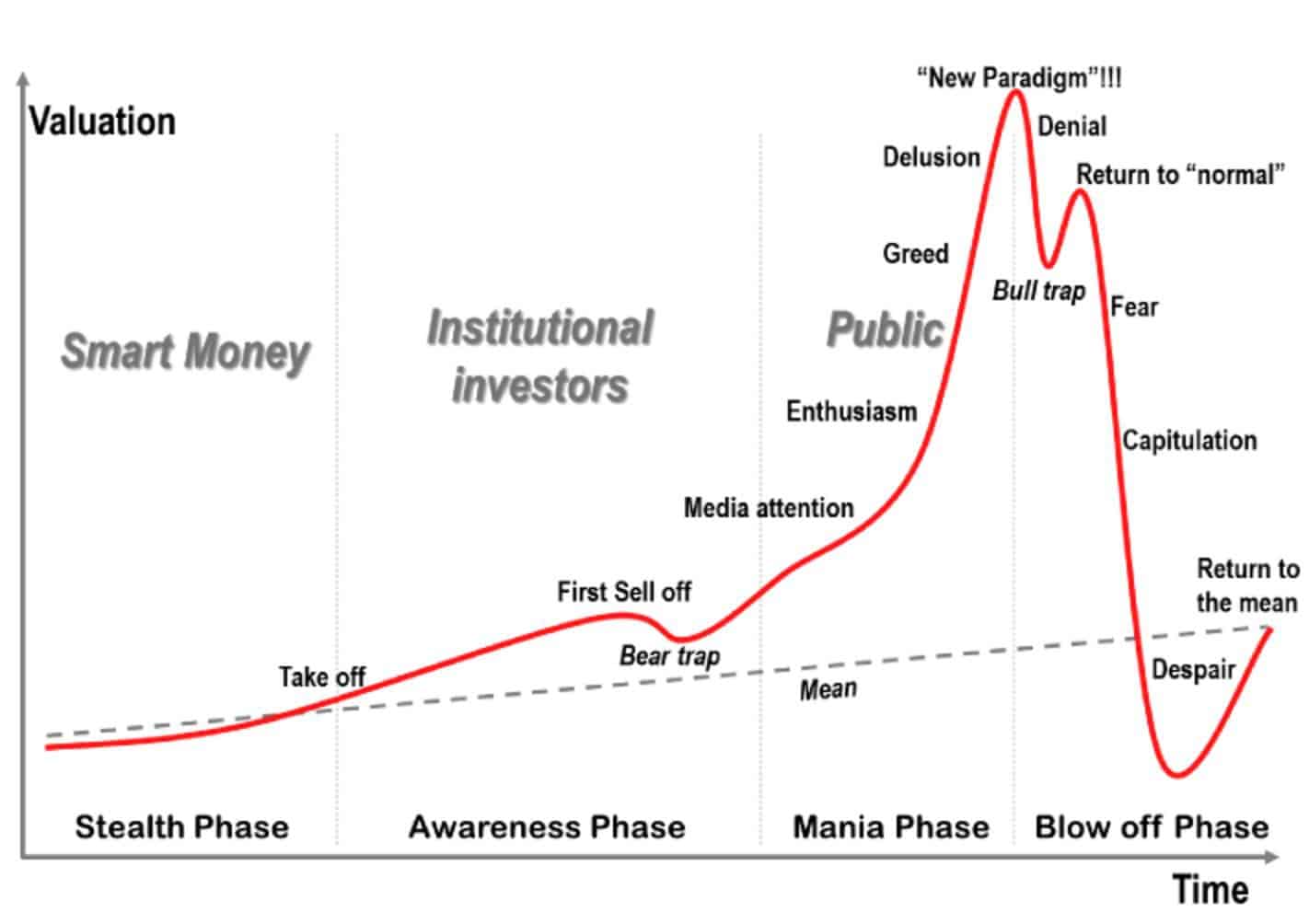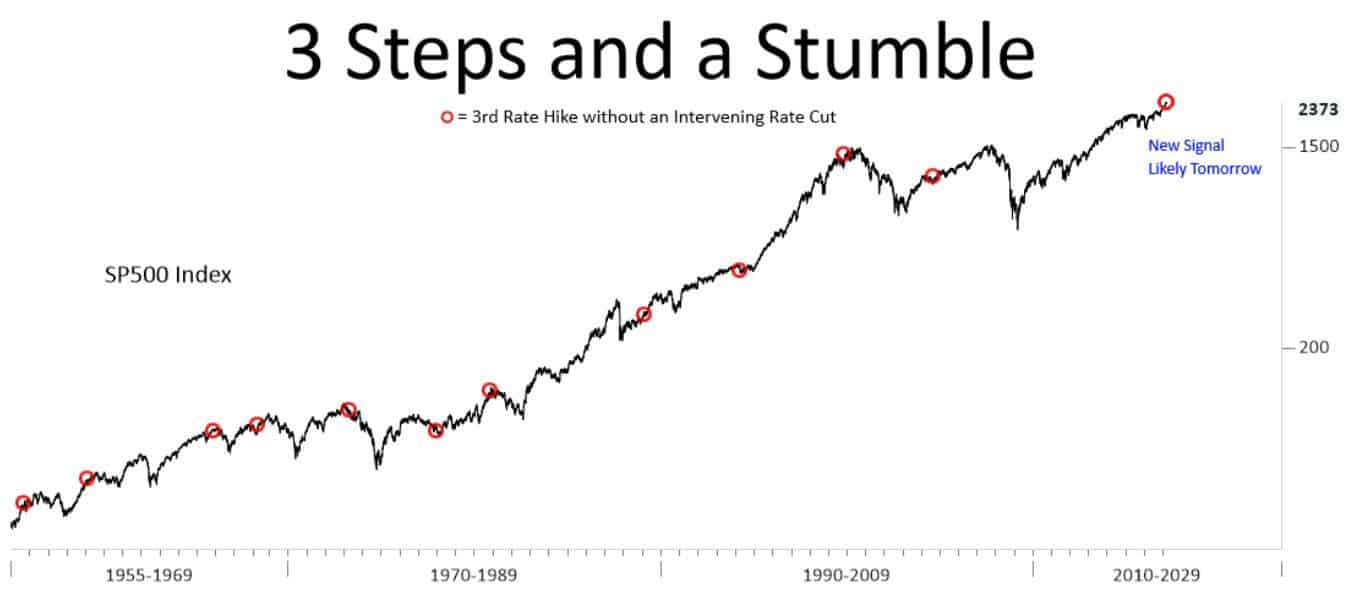The following is an excerpt from our weekly Market Brief. If you’re interested in learning more about Market Briefs and the Macro Ops Hub, click here.
The Fed hiked on Wednesday as expected, bringing the Fed Funds rate to a whopping 1%. The market, with its rose colored glasses in full effect, interpreted the hike as dovish.
In reality the meeting was neither overly dovish or hawkish. The Fed stuck to its playbook of hiking rates and muting expectations going forward. Their infamous dots still project two more planned hikes this year and three more the year following.
Nautilus Research published the following chart noting market action following the third rate hike in a tightening cycle.
The “3 steps and a stumble” theory was put forth by late trader and market guru Marty Zweig (he wrote a book worth reading titled Winning on Wall Street). Zweig noticed that the market has a tendency to considerably underperform following the third rate hike in a hiking cycle. Here’s the following from Nautilus.
The SP500 has endured significantly below average results from 1 to 12 months after 3rd rate hikes in 11 events back to 1955. Note that 6 (more than half) of those hikes occurred within a year of a major cyclical top for stocks (1955, 1965, 1968, 1973, 1980, 1999). However, the market defied that relationship on the last occurrence in 2004 by rallying for 3 more years… When looking at all hikes – note that hikes are generally bad for stocks, somewhat bad for the US Dollar, and bullish for 10yr yields and commodities.
Yale economics professor Robert Shiller, of CAPE ratio and “Irrational Exuberance” fame, noted the similarities in sentiment between the current market and that of the late tech bubble (an analog we’ve discussed quite a bit).
In a recent Bloomberg article Shiller said, “They’re both revolutionary eras, in the tech boom it was a new era of prosperity brought on by the internet now it’s a ‘Great Leader’ has appeared. The idea is, everything is different.” But no matter how you cut it, Shiller says “The market is way over-priced… It’s not as intellectual as people would think, or as economists would have you believe.”
Going off of the chart below, it’s safe to say we’re transitioning from the greed to euphoria stage. Take a look at magazine covers and article headlines and it’s easy to see that the market is entering a new level of optimism and complacency.
As we progress further into the latter innings of this cycle, and as expectations become more and more dependent on a narrowly defined and exceedingly optimistic future, it pays to remember the following from the book Ubiquity: Why Catastrophes Happen (bolding is mine):
In this simplified setting of the sandpile, the power law also points to something else: the surprising conclusion that even the greatest of events have no special or exceptional causes. After all, every avalanche large or small starts out the same way, when a single grain falls and makes the pile just slightly too steep at one point. What makes one avalanche much larger than another has nothing to do with its original cause, and nothing to do with some special situation in the pile just before it starts. Rather, it has to do with the perpetually unstable organization of the critical state, which makes it always possible for the next grain to trigger an avalanche of any size.
(Note: There will be eleven(!!) Fed members speaking this week. Who knows what kind of tone they’ll take, but it should make for an interesting week).
The above is an excerpt from our weekly Market Brief. If you’re interested in learning more about Market Briefs and the Macro Ops Hub, click here.











